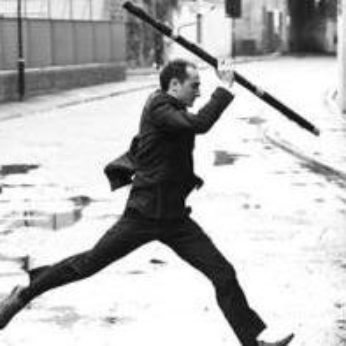Composer: Georg Philipp Telemann (b. 1681 - d. 1767)
Performance date: 07/07/2012
Venue: St. Brendan’s Church
Composition Year: 1716-1725
Duration: 00:17:14
Recording Engineer: Anton Timoney, RTÉ lyric fm
Instrumentation Category:Small Mixed Ensemble
Instrumentation Other: rec, bn, 2vn, va, vc, thb, hpd
Artists:
Kate Hearne -
[recorder/cello]
Peter Whelan -
[bassoon]
Arte dei Suonatori (Aureliusz Golinski, Ewa Golinska [violins], Anna Nowak [viola], Tomasz Pokrzywinski [cello], Dohyo Sol [theorbo], Joanna Boslak-Gorniok [harpsichord]) -
[baroque ensemble]

One
of Telemann’s ideals as a composer was to
give each instrument that which suits it best, so that he who plays will do so
with joy and he who listens will do so with pleasure. By putting this
little principle into practice, Telemann ensured that both his chamber and
orchestral music were among the most frequently played and loved throughout
Europe during the first half of the 18th century. It helped, of course, that
Telemann was superbly proficient on many instruments, including both the
bassoon and recorder, and his knowledge of the technical demands and
possibilities make for very idiomatic writing. Telemann found comfort in
writing for unusual combinations of instruments, and was fascinated by the
juxtaposition of sound and colour this created. The only other composer brave
enough to dare pair off the bassoon and recorder as soloists on an equal level
was Antonio Vivaldi.
Although Telemann never travelled to
Italy, he, like his German contemporaries, was very influenced by the Italian
style. As with many of his concertos, Telemann adopts Corelli’s four-movement concerto da chiesa form for this work. Although it is
hard to date this concerto, the structure of the movements show signs of being
influenced by the ritornello form introduced by Vivaldi in his L’estro armonico of 1711, which Telemann uses here to
varying degrees in all four movements. The only surviving copy is a beautifully
drafted manuscript, undated and probably in the hand of Graupner, held in the
library of the former Hesse court at Darmstadt.
The concerto opens with an elegant and
graceful amoroso, the bassoon and recorder
conversing politely with each other and with their tutti string group. A lively
fast movement follows, where the conversation heats up to create a virtuosic
match-play between the instruments, each daring the other to play higher &
faster. The proceeding grave creates a serene atmosphere from the
start with its walking bass and pulsing upper strings, inviting the soloists to
at last unite in an almost romantic assignation. All indulgence is forgotten in
the joyful finale of contrapuntal statements, bringing the concerto to a bright
and sparkling finish.
Copyright © 2025 West Cork Music. All rights reserved.
Designed and developed by Matrix Internet